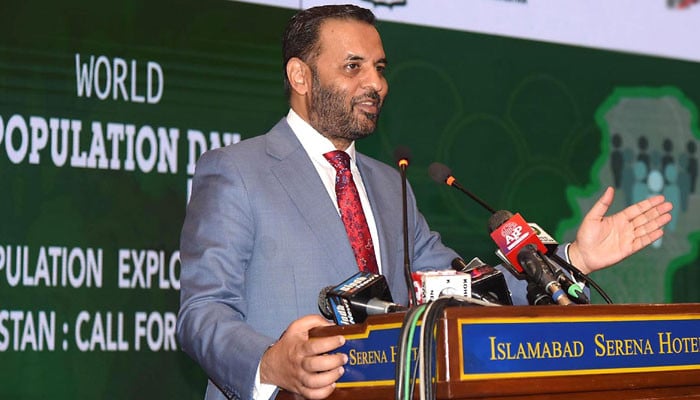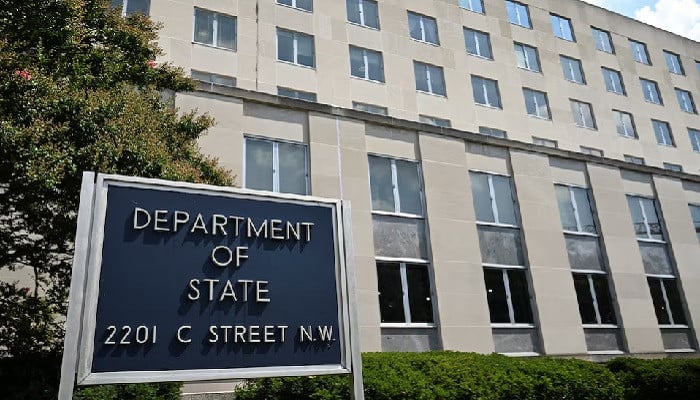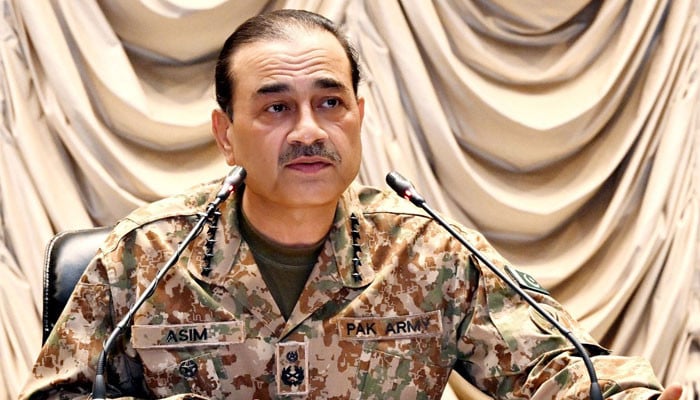
#cautious #optimism #Political #Economy
His government is enthusiastically celebrating what some of its leaders see as a resounding success of its economic policies. They consider the increasing index of Pakistan Stock Exchange and significant reduction in inflation rate as clear indicators of economic turnaround. PSX has seen a fairly consistent rally.
Economic indicators, such as increased sales of cement and petroleum, decline in interest rates from 23 percent to 15 percent, and improved trade balance have added to the bullish sentiment in the market. This impressive increase is largely due to a sharp decline in inflation, which fell to 4.9 percent in November 2024 – the lowest level since 2017 – thereby boosting investor confidence and raising policy rates. I grew hopeful about further reductions.
Additionally, Pakistan is progressing diligently with its International Monetary Fund program, demonstrating a strong commitment to macroeconomic stability and sustainable development. The Finance Ministry has confirmed that the 37-month $7 billion Expanded Fund Facility (EFF) is progressing smoothly with all conditions being met by the government. Finance Minister Muhammad Aurangzeb has emphasized that it is important to stick to the reform agenda for the successful completion of the program and to ensure that this is Pakistan’s last engagement with the IMF.
Key reform areas include taxation, energy management, state-owned enterprises and public finance. All these things were told during the recent briefing given to the National Assembly’s Standing Committee on Finance. These reforms have not only strengthened the confidence of investors but also given Pakistan a favorable position on the global investment stage.
Pakistan is increasingly being seen as a favorable destination for foreign investment. Recent engagements with Saudi Arabia, including high-level talks and a visit by Saudi Investment Minister Khalid bin Abdulaziz Al-Falih, highlight the potential for stronger cooperation. As Saudi Arabia’s Vision 2030 drives a transformative agenda, Pakistan’s resilient private sector has a unique opportunity to keep pace with developments. High-value sectors such as solar energy, mining and agriculture offer promising avenues for investment, supported by commitments such as the recent $2.8 billion Memorandum of Understanding.
However, there is a danger that the government may be over-enthusiastic about these achievements. While current achievements are commendable and provide grounds for optimism, it is important to recognize that Pakistan’s structural problems remain a major concern. The country’s total external debt reached $130.85 billion in 2023, equivalent to 352 percent of its total exports and 39 percent of its gross national income (GNI).
Among its creditors, China is the largest with 22 percent ($28.79 billion), followed by the World Bank with 18 percent ($23.55 billion) and the Asian Development Bank with 15 percent ($19.63 billion). Debt service remains a significant burden, amounting to $14 billion in 2023, including $4.33 billion in interest payments and $9.67 billion in principal payments. This servicing accounts for 43 percent of export earnings and 5 percent of GNI, reflecting fiscal pressures arising from both principal and high interest costs.
Additionally, Pakistan’s structural economic health remains fragile, casting doubt on the country’s momentum. Core economic indicators continue to show weaknesses that could hinder sustainable long-term growth. High external debt, underinvestment in key sectors such as health and education, and high unemployment among the educated population indicate deep-rooted structural problems that need to be addressed.
Although Pakistan lags some regional counterparts in areas such as agricultural production – with value added per worker of 3,105.69 compared to India’s 2,116.18 and Bangladesh’s 1,380.46 – and wider social safety nets reach 6.93 percent of the population. , compared to India’s 4 percent and Bangladesh’s 4 percent. Pakistan lags behind in health care expenditure (43.09 per capita versus India’s 74 and Bangladesh’s 57.94), has a high learning poverty rate of 79.54 percent compared to India’s 56.07 percent and Bangladesh’s 51.22 percent. , and those with higher levels of education (especially women) face higher unemployment. 33.86 percent versus about 20 percent in India and Bangladesh).
These structural weaknesses underscore the need for continued reform and strategic investment to ensure that recent economic progress translates into sustainable and inclusive growth. Thus, while there is reasonable optimism regarding the current achievements of the government, a cautious and balanced approach is needed in view of the persistent and multifaceted structural challenges facing Pakistan’s economy.
Despite recent positive developments, several structural issues threaten to hinder Pakistan’s ability to convert these short-term gains into long-term growth. Reducing the country’s debt burden is critical and requires immediate, strategic action. The significant share of debt servicing — $14 billion in 2023, consuming 43 percent of export earnings and 5 percent of GNI — severely limits the government’s ability to invest in essential services and infrastructure. To address this, Pakistan must implement measures that generate income without increasing the financial hardship of its population.
Key strategies include enforcing tax compliance among the business community and those outside the tax net. This can significantly increase the revenue of the government. Additionally, improved diplomatic relations with neighboring countries may allow for a reduction in military spending. Given Pakistan’s nuclear capability, the need for higher defense spending should diminish. However, the resurgence of terrorism requires increased spending on security, posing additional challenges to the national economy.
Political instability is closely linked to Pakistan’s economic condition, negatively impacting job creation and tarnishing the country’s image as a viable destination for long-term investment. The turbulent political environment leads to a decline in foreign investment, as investors seek more stable regions. Domestic investors may also divert their capital to speculative projects, which do not contribute to national output, rather than productive investment. Furthermore, political chaos distracts governments from effective governance, forcing them to focus on short-term political gains rather than long-term economic strategies.
Increasing political polarization, characterized by personal animosity and the imprisonment of opposition figures, exacerbates the problem. Frequent changes in government disrupt policy continuity, as successive administrations often reverse some of the policies introduced by their predecessors. This practice undermines economic stability and prevents the implementation of sustainable, long-term development plans.
The current industrial policy of Pakistan is the best. It is heavily dependent on low-level exports with minimal price increases. Lack of innovation hinders competition in the global market, where many countries produce identical products at low cost. Additionally, over-reliance on imports for machinery and essential production inputs increases production costs and reduces profit margins. China-Pakistan Economic Corridor investment has inadvertently driven out local industries by making energy more expensive, causing many domestic businesses to close or relocate abroad. As a result, local investors, faced with high production costs and limited returns, are channeling their investments into speculative activities rather than productive projects. This change undermines the prospects for sustainable economic growth and negates short-term economic gains.
Pakistan’s education system faces significant challenges that undermine its ability to contribute to economic and social development. Despite increasing enrollment in higher education, particularly at the university level, the system emphasizes rote learning and advanced degrees over innovation and practical problem-solving skills. This focus results in a workforce that excels in exams but lacks the critical thinking and creativity needed to drive economic growth.
Consequently, worker productivity remains low. This problem is exacerbated by poor education and lack of vocational training, particularly among marginalized populations. With a learning poverty rate of 79.54 percent, Pakistan lags behind its regional peers, limiting its potential for economic and social development. The high unemployment rate among educated people, especially women (33.86 percent) indicates a mismatch between educational outcomes and labor market needs.
Addressing these issues requires comprehensive education reforms that prioritize innovation, critical thinking and practical skills, as well as expand vocational training and skill development initiatives to increase worker productivity and Employment can be reduced.
Pakistan’s heavy reliance on social services such as the Benazir Income Support Program may have some unintended consequences. Although temporary financial support is necessary for vulnerable populations, prolonged dependence can discourage self-reliance and perpetuate economic dependence. To mitigate this, the government should complement financial assistance with comprehensive skill development programs that enable individuals to achieve self-sufficiency.
To ensure that social services do not lead to poverty, it is important to focus on developing skills and learning trades. By integrating skill development initiatives with financial support, Pakistan can empower its population to earn dignified livelihoods and reduce long-term dependence on government assistance.
While the government’s celebration of recent economic successes is understandable, it is critical that we recognize and address the deeper structural challenges that threaten sustainable development. To overcome these challenges, Pakistan will have to undertake comprehensive reforms in debt management, political stability, industrial policy, institutional quality, education and social services. Only by addressing these fundamental issues can the nation transform its short-term economic gains into sustainable and inclusive growth and secure a prosperous economic future for its citizens.
The author is a tenured Associate Professor and Head of the Department of Economics, COMSATS University Islamabad, Lahore Campus.






